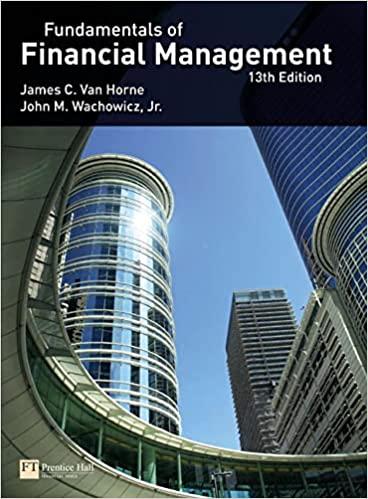Question
1.What is the geometric average of -12%, 20%, and 25%? 2.The buyer of a new home is quoted a mortgage rate of 0.5% per month.
1.What is the geometric average of -12%, 20%, and 25%?
2.The buyer of a new home is quoted a mortgage rate of 0.5% per month. What is the APR on the loan? What is the EAR?
3.An investor invests 70% of her wealth in a risky asset with an expected rate of return of 15% and a variance of 9%, and she puts 30% in a Treasury bill that pays 5%. What are the expected rate of return and standard deviation of the complete portfolio?
4.Consider the following two investment alternatives: First, a risky portfolio that pays a 15% rate of return with a probability of 40% or a 5% rate of return with a probability of 60%. Second, a Treasury bill that pays 6%. What is the risk premium on the risky investment?
5.The return on the risky portfolio is 15%. The risk-free rate, as well as the investor's borrowing rate, is 10%. The standard deviation of return on the risky portfolio is 20%. If the standard deviation on the complete portfolio is 25%, what is the expected return on the complete portfolio? [Hint: You need to use two formulas from slide# 29. First find out "y" using one formula and then use "y" in the other formula to calculate the expected return.]
6.You are considering investing $1,000 in a complete portfolio. The complete portfolio is composed of Treasury bills that pay 5% and a risky portfolio, P, constructed with two risky securities, X and Y. The optimal weights of X and Y in P are 60% and 40%, respectively. X has an expected rate of return of 14%, and Y has an expected rate of return of 10%. You decide to hold 25% of your complete portfolio in the risky portfolio and 75% in the Treasury bills. What would be the dollar values of your positions in X and Y?
7.What is the VaR of a $10 million portfolio with normally distributed returns at the 5% VaR? Assume the expected return is 13% and the standard deviation is 20%. The 5% VaR for a standard normal distribution (with mean = 0, = 1) is -1.64485. [Refer to the formula and problem that I have shown in the class.]
Step by Step Solution
There are 3 Steps involved in it
Step: 1

Get Instant Access to Expert-Tailored Solutions
See step-by-step solutions with expert insights and AI powered tools for academic success
Step: 2

Step: 3

Ace Your Homework with AI
Get the answers you need in no time with our AI-driven, step-by-step assistance
Get Started


